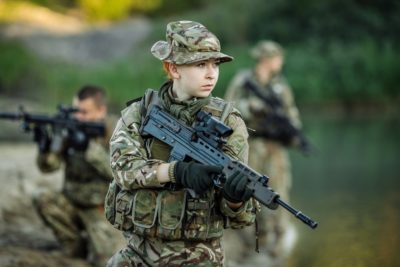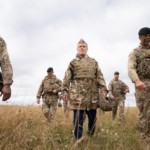Young soldiers ‘more likely to die’
Evening Standard
Human rights groups Child Soldiers International and Forces Watch, who were behind the study, said the increased risk reflected the “disproportionately high” number of 16-year-olds who join front-line infantry roles.
The Army’s recruitment policies drive young people with limited academic qualifications into the most dangerous roles because they are unable to enter less risky support or technical positions, the report’s authors said. A greater number of tours of duty in Afghanistan by soldiers who joined the Army at 16 was also a probable contributing factor, they added.
The Ministry of Defence (MoD) said it disputed the figures and claimed it was “wrong and misleading” to suggest that the Army channels minors into the most dangerous roles. The study looked at the deaths of 209 British soldiers killed in Afghanistan between October 2001 and March 31, 2013. It found the risk of fatality in Afghanistan to soldiers who enlisted aged 16 between 1999-00 and 2008-09 was 1.92 per 1,000, compared with 1.32 per 1,000 for those who enlisted at 17 and 1.33 per 1,000 for those who enlisted aged 18 or above.
When comparing age groups, the report found soldiers who enlisted at 16 and completed training were approximately twice as likely to die in Afghanistan as those enlisting at 18 or above.
Author David Gee, from Forces Watch, said: “We knew that Army recruitment policy channelled minors into the most dangerous roles, but these findings on the increased risk faced by those enlisting at 16 are striking. The higher risk begins the day you’re signed into a combat regiment, not the moment you land in Afghanistan.
“The Army will always struggle to recruit for the most dangerous jobs, but currently the burden of risk lies heaviest on the youngest, most disadvantaged and psychologically vulnerable recruits.”
Richard Clarke, director of Child Soldiers International, said: “Actively recruiting 16-year-olds into the Army’s most dangerous positions – while downplaying the risks in its recruitment materials – is misleading and harmful. The MoD should be encouraging young people to stay in education until 18, when a fuller range of Army careers will become available to them, and only then take an informed decision about whether to enlist. It is important that parents are aware of the increased risks their children would face by enlisting into the Infantry when compared with other parts of armed forces.”
An MoD spokeswoman said: “We do not recognise the figures suggested in this report which have not been correctly sourced and are not based on official statistics. We can be clear that the safety of our personnel is our top priority and it is wrong and misleading to claim that the Army channels minors into the most dangerous roles. It is also inaccurate to claim that 16-year-olds are barred from certain roles. The armed forces provide challenging and constructive education and training opportunities for all personnel, especially those that may join at 16 years, and many individuals go on to gain qualifications whilst serving in the armed forces.”
The MoD pointed out that the report included estimated figures for the age of enlistment for some soldiers and excluded officers, reservists and Gurkhas which, it claimed, did not provide an accurate comparison.
See more: recruitment age, risks,










